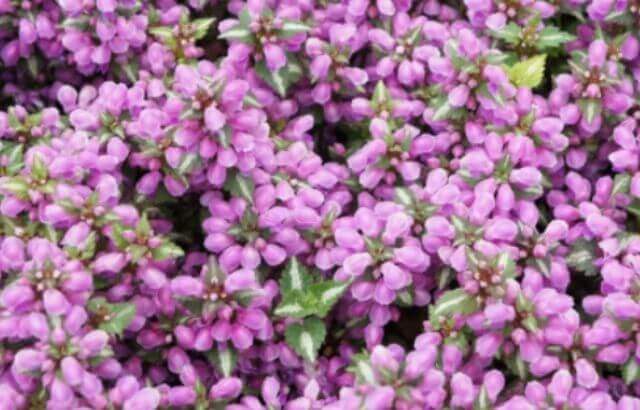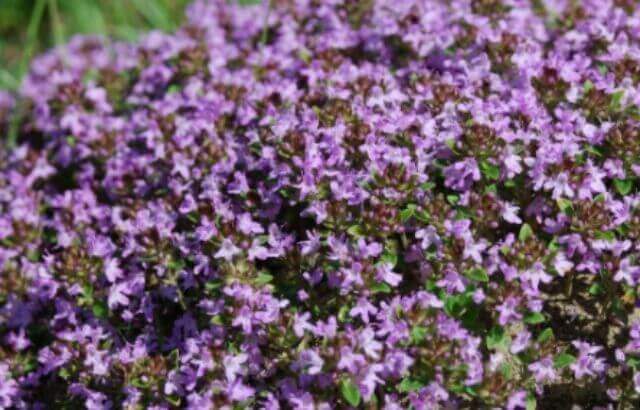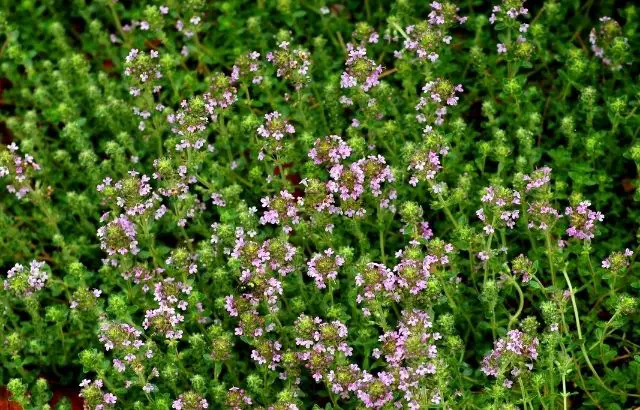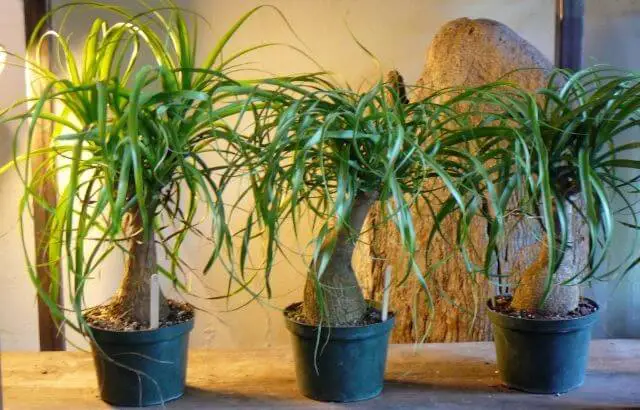The Creeping Thyme is native to the Mediterranean region. Thanks to the various uses of this aromatic herb, its cultivation has expanded throughout the world.
This perennial plant belongs to the Labiatae family, like other aromatic herbs such as basil, mint, and rosemary. The main use of this plant is linked mainly to gastronomy, as it helps to flavor a wide variety of dishes and can be used to make infusions.
As for the medicinal environment, both the leaves and the flowers are used to prepare infusions and essential oils. These are used primarily for their antiseptic properties and their ability to reduce joint pain.
The Creeping Thyme can be found at an altitude of between 0 and 2,000 meters above sea level. This aromatic herb grows as small shrubs and in areas with direct sun. It is often found on the side of roads or in gardens covering spaces between other crops. Its natural habitat is the northern hemisphere countries, such as southern Europe, northern Africa, and Asia Minor.
How to Plant Creeping Thyme
Something to keep in mind about planting the different varieties of thyme is that it can be sown through seeds and cuttings. You can also choose to purchase specimens already grown in nurseries. As thyme is a plant that grows as a shrub, it is advisable to maintain 60 to 80 centimeters between each plant.
The process of how to plant the creeping thyme in the definitive place should be carried out in early spring and during the summer so that once it has entered winter, it does not hinder its growth.
Propagation by seeds
Using seeds, it is recommended to sow them in seedbeds ending the winter indoors in a warm and dark environment. The seeds should be lightly covered and watered with a watering spray to avoid stirring them. Generally, the seed will take about two to three weeks to germinate. The transplant to the final place is carried out when the plants have a height of 15 cm.
Propagation by cuttings
If you choose to propagate by cuttings, then you must have a creeping thyme plant already developed. This process of how to plant the common thyme can be done in two ways.
The first is by slightly lifting the plant branches to look for those in contact with the soil and have developed small roots. Then you must untangle this branch very carefully and cut the branch from the back while trying to keep the roots in the cutting. This thyme cutting is then transplanted into a small pot, and the first abundant watering is done.
How to Grow the Creeping Thyme
The Creeping Thyme is a rustic plant, very easy to grow. However, to be successful with this plant, it is important to know its characteristics. So take note of how to grow thyme properly:

Ideal soil
The Creeping Thyme enjoys dry, sandy soil, a common feature of the Mediterranean region. To reach the ideal soil for planting thyme, it is recommended to add a little limestone or sand to the soil. This composition also favors water drainage.
The Creeping Thyme must be fertilized only once a year, preferably in the autumn months. A good choice of fertilizer for the thyme is worm humus and castor bean cake. Because it is a rustic plant, the Creeping Thyme does not require many nutrients and grows well in poor soils.
Light
The Creeping Thyme, like practically every aromatic herb, needs light to grow and develop. This means that you should leave the pot of thyme in a location that receives at least five hours of direct sunlight daily.
Pruning
Pruning should be done every year after flowering to prevent the stem from becoming woody and losing its aroma. This is done in autumn and consists of removing the flowers when the leaves begin to wither.
Climate
The Creeping Thyme is a plant that adapts very well to dry, sunny and hot climates. This plant can grow in temperate climates and with extreme temperatures since it supports droughts and frosts. However, its growth is difficult in humid environments.
How to plant thyme begins by looking for a place where this plant receives direct sunlight. In urban gardens, it is recommended to plant thyme on the edges of your garden to take advantage of its repellent capacity.
Ground
Another factor about growing the creeping thyme is to consider that this plant adapts very well to different soil types, but you should avoid acidic substrates. The ideal substrate should have good drainage and should be dry. If you’re using clay soils, you should mix them with some compost to improve drainage.
This aromatic plant can be grown in direct soil and pots with a depth of no less than 35 centimeters, as earlier highlighted.
Irrigation
Thyme is not a big fan of water. The plant prefers dry rather than wet soils, so it is always recommended to check the soil moisture level before watering the thyme again.
Water only when you notice dry land. During the hottest days of the year, the spacing between watering tends to be smaller, while in the autumn and winter months, you may water the pot only once a week.
When in doubt, always does the finger test, touching the soil to feel the degree of humidity? If the finger comes out dirty, a sign that it is still possible to wait another day before watering the thyme.
Control of Pests and Diseases
The Creeping Thyme is a plant that is not commonly attacked by pests and diseases although if you do overwatering, it can be prone to fungus and disease.
One of the diseases which can attack this plant is Meloidogyne hapla. This is born in its roots, but it manifests itself in its leaves since they will take on a very intense yellow color. If you want to combat this type of disease, you must carry out a general cleaning and effective care of the plant.

Harvest
The Creeping Thyme is harvested in late spring in full bloom and when the plant has a great aroma. The best time to carry out harvesting is in the morning when the plant is dry and free of dew. For this, disinfected scissors should be used, and half of the most vigorous stems should be cut, taking care to leave the same number of leaves on the plant compared to the collected section.
The stems are then shaken well and bunched up in bunches to hang upside down on a string. These bouquets should be put to dry in a ventilated, warm, dry place that does not receive sunlight.
Extra Tips and Some more Curiosities about Growing the Creeping Thyme
When planted in gardens and beds, the creeping thyme becomes a beautiful ornamental option since the plant blooms annually in small flowers with colors ranging from pink to lilac.
The creeping thyme flowers attract bees and butterflies, making your garden and vegetable garden even more alive and colorful.
The creeping thyme can be planted alone or combined with other herbs. But be careful: plant the creeping thyme only with herbs of similar cultivation, that is, those which have the same needs for watering, light, and fertilization, such as rosemary and lavender.
Always remove weeds that are growing around the thyme, as they compete for space and nutrients.
The creeping thyme leaves should be used preferably dry, while those of lemon thyme should be used fresh.
Try to harvest the thyme branches before flowering, when the flavor and aroma are at maximum concentration.
It is also recommended to remove the thyme flowers if you do not use the plant with a decorative effect. This is because the flowers end up reducing the potential for flavor and aroma of the leaves.
When in doubt, do not water the creeping thyme. It is much easier for you to kill the plant by excess than by lack of water.
Never harvest all the branches of the creeping thyme tree. Always leave a portion of leaves, especially the newer ones, to guarantee the renewal of the plant.
Creeping Thyme: FAQ Section
How long does it take for creeping thyme to grow?
On average, the creeping thyme grows and gets ready to be harvested between 60 to 90 days after planting from seedlings.
Where does creeping thyme grow best?
The creeping thyme grows best in neutral to slightly alkaline soil.
Will creeping thyme grow in mulch?
Yes. If done adequately, the creeping thyme can grow in the mulch.
Conclusion
In conclusion, the creeping thyme is an aromatic subshrub of the lipped family. It is popular due to its spicy flavor and is a spice worth having in the garden because, in addition to decorating the beds, it is good for your health. This plant can also be grown easily upon using the tips for growing creeping thyme plants highlighted above.
Read More: Caring For The Glory Of Snow Bulbs




